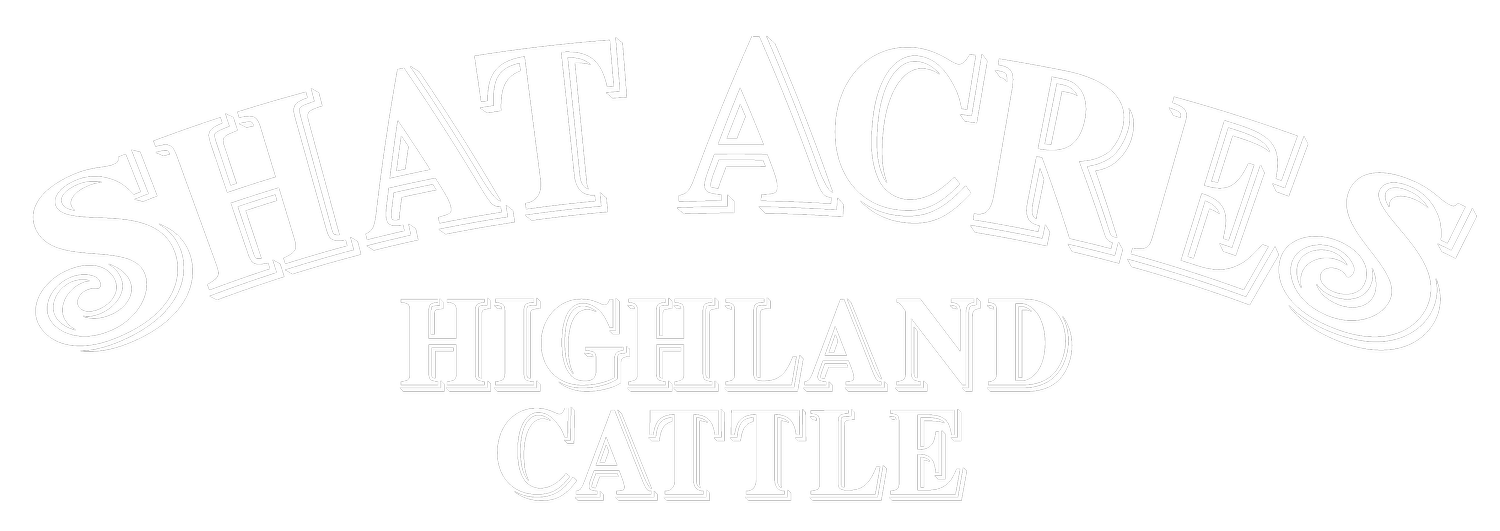“But what if I want to stay out in the pasture with momma?”
Five more 2023 weanling calves came into the barn this week. A question is sometimes asked if it is necessary to wean calves, or will the mommas wean the calves by themselves? For thousands of years Highlands have survived, much of that time without a lot human intervention. During that time the majority of weanings took place naturally--or the breed would not have endured. But not all. When natural weaning was not successful, momma might be weakened by not having a rest period to rebuild her strength before the arrival of a new calf. Calving might not be successful due to her weakened condition. Momma might not have sufficient colostrum and milk for her new arrival. In some cases, the older calf might remain dominant over the newbie, preventing the new arrival from nursing and receiving adequate nutrition.
Any of these situations could result in loss of a calf.
We are not willing to play nature's roulette with our most valuable product. Shat Acres is a cow/calf farm, where the success of the offspring momma cow produces each year after her nine month and nine-day gestation is of utmost importance. Like others, we don't save every calf, but it is not for not trying. We want that calf to have the best chance of survival and the best quality of life and do everything possible to ensure that success. One of the ways we so this is to separate momma and baby at six months, practicing Fence Line Weaning where momma and calf can see, smell, touch noses several times each day. There is a lot of "barn talk" those first couple of days with Momma and calf mooing to each other several times each day, with momma telling her baby to come out of the barn to nurse and baby responding, “I can't.” After several days both become more accepting of the situation. Momma visits her calf less often and calf calls to momma far less frequently. This type of weaning is far less stressful than keeping momma and calf far apart where they cannot see each other, with them both worrying about where the other is. Conventional wisdom used to be having momma and baby far apart so they couldn't see each other, hoping they would just forget about each other. Would you forget about your child if you couldn't see him or her?
Although many do, we do not feed our cattle treats. We want the treat to be combing and interaction with humans, so the cattle do not invade your space or expect a food treat whenever they see you. Our Highlands get the best quality grass and hay possible, having been bred to grow and thrive on this forage. We do introduce our calves to grain when they come on for weaning. This compensates for the drop in protein from momma’s milk to hay, and if we need to call the cattle or move them, they will know what grain is. Grain is like candy to the cows, and just shaking some in a pail brings them running. They don't get grain on a regular basis but if coaxing is needed, they know what grain is.
It is during this weaning time that we socialize our calves in preparation to move to a new fold. Most calves have not been touched since tagged at birth and fence trained at about one week old. Ray begins by combing the calves. We usually bring several weanlings in at the same time, so they are not as lonely leaving momma. Putting them in a small pen where they cannot get away, and standing calmly amongst them while talking to them, the calves get used to human presence. Each time a calf passes by a comb or soft brush gently runs over their hair. The calf learns how wonderful the comb or brush feels--and soon they are addicted to what humans can offer them! After combing is successful halter training begins, so calves can be led comfortably and safely for calf and handler. Calves are never tied with their halter until they are comfortable with the feel of the rope and being led. After halter training is underway, we introduce the calves to our squeeze chute so they are comfortable with handling systems for vet care if needed. Walking them through the chute around and around is like a follow the leader game for the calves. This ensures that if an animal must be restrained for immunizations, tattooing or vet care they are comfortable with the chute.
These steps make sure any Highland breeding stock animal we sell is docile, halter trained, and used to combing. For over fifty-seven years our goal has been to help breeders, new or experienced be happy and successful with their Shat Acres Highland purchase. The best way to do that is to promise the quality heritage genetics, superb conformation, docility, longevity, good udders, legs, and maternal instinct--and the joy of being able to comb and interact with your Highland purchase when they arrive at your fold. www.ShatAcres.com
#shatacreshighlandcattle #highlandhousefarmstay #greenfieldhighlandbeef #farmlife #highlandcow Capital City Farmers' Market Montpelier Vermont Montpelier Veterinary Hospital Vermont Agency of Agriculture Vermont Agritourism
